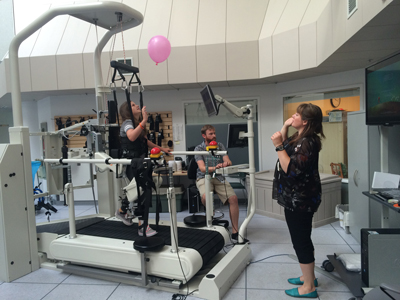
Researchers at the University of Alberta (UAlberta), Edmonton, Canada, are studying the use of robotic gait training for children with cerebral palsy (CP).The randomized control trial is being led by Lesley Wiart, PhD, assistant professor of physical therapy at UAlberta’s Faculty of Rehabilitation Medicine. Wiart and her team are evaluating the effectiveness of the Lokomat robotic gait training program compared with regular physical therapy for enhancing walking abilities of children and youth with CP. UAlberta is currently recruiting more children and youth to be part of the study. The cohort will be placed in four groups: robotic-assisted gait training, regular physical therapy, a combination of robotic-assisted gait training and regular physical therapy, and no treatment.
The robotic legs of the Lokomat guide the user through walking movements on a treadmill. The device supports the user’s body weight so he or she can move his or her legs more freely. The body weight support and the amount of guidance is decreased over time to more closely replicate regular over-ground walking. There is a video game connected to the Lokomat that provides feedback on the force the user is generating.
“Research evidence for robotic gait training for children with cerebral palsy is limited,” said Wiart, who is also a research associate at the Glenrose Rehabilitation Hospital, Edmonton. “We are doing this study so that families and clinicians have information about effectiveness and they can make informed decisions about physical therapy treatment. We are interested in how the treatment affects walking but also how it affects the child’s confidence to participate in physical activities and their participation in other activities in their homes and communities.”
The qualitative part of the study will focus on the parents’ and children’s beliefs and values about walking and why the mobility goals are important to them. This will help the researchers understand families’ goals and values about walking, because many families are more focused on ensuring their child can move around effectively and are less focused on how their child moves.
“Robotic gait training interventions are becoming more and more popular, especially for parents who are seeking out the newest technologies and interventions,” said fellow researcher Shanon Pehlan, BSc, MSc, PhD, assistant professor of occupational therapy at the Faculty of Rehabilitation Medicine. “We tend to assume all children want to walk or use a robot because it’s cool, but that’s not always the case and it’s important to listen to the child’s perspective on this.”
Editor’s note: This story was adapted from materials provided by the University of Alberta.




